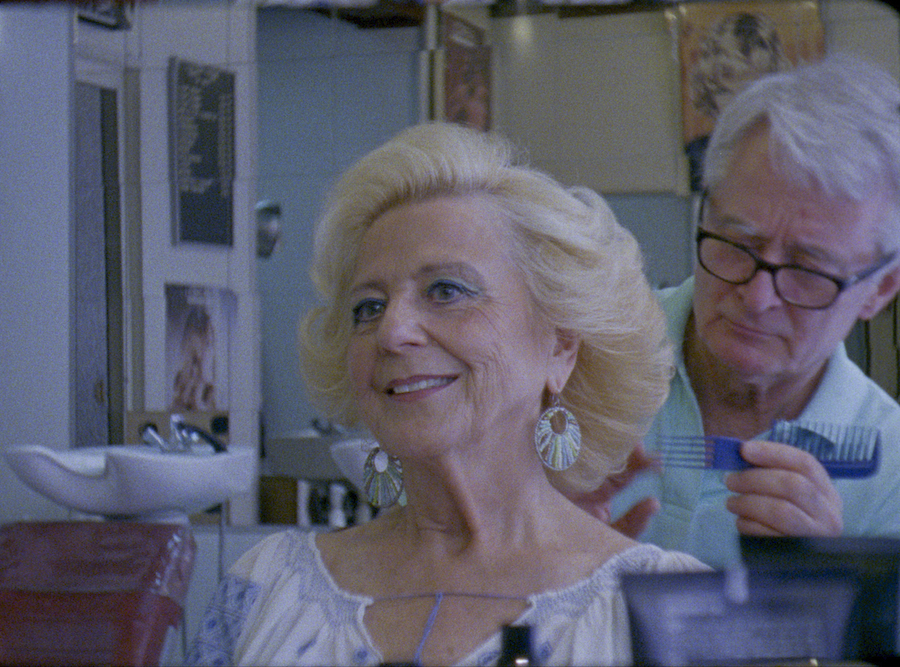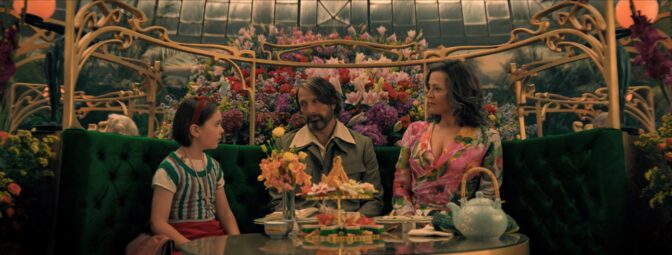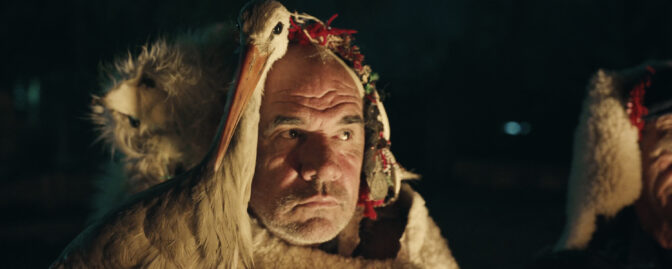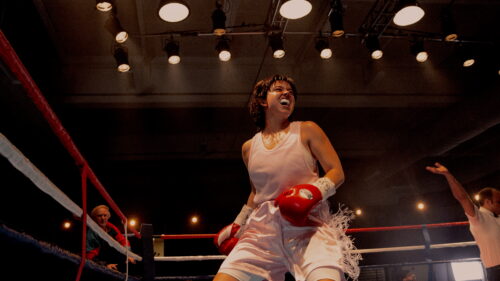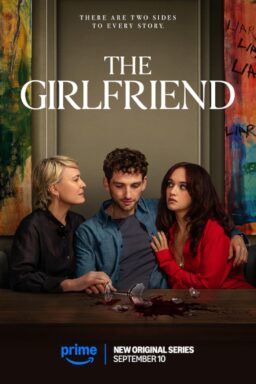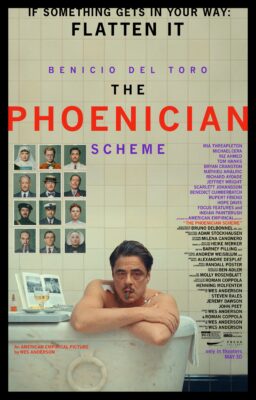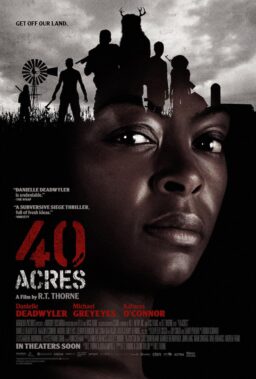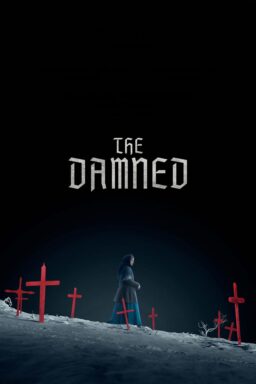My last day at Hot Docs 2017 began with an out-of-body experience so overwhelming that I’m still trying to wrap my mind around it. Throughout the festival, documentaries in the form of virtual reality have been screening for free at Toronto’s Brookfield Place. I sampled three of them, and the best by far was “Dreams of ‘O’”, which showcases various performers from Cirque du Soleil portraying characters from their popular aquatic show, “O.” Watching this surrealistic, wordless imagery devoid of context while having it surround me on all sides was as close to a waking dream as anything I’ve ever experienced. I can’t wait for an artist like David Lynch or Jonathan Glazer to try their hand at this medium. The potential for new levels of immersion is limitless.
Later that afternoon, I attended a screening of Selma Vilhunen’s rousing “Hobbyhorse Revolution,” which sheds light on a trend among teenagers that is beginning to spread throughout Europe. An estimated 10,000 teens in Finland alone have begun taking up the sport of hobbyhorse riding, participating in competitions where they gallop through obstacle courses, leaping over hurdles (some well over four feet high) while remaining perched on their horse. “This community of girls knows how to respect each other,” Vilhunen told me. “They talk about other issues apart from ‘hobbyhorsing,’ and they don’t have to hide any sides of their personalities. My theory is that because these people are so skilled at using their imagination and sharing it with other people, they know how to acknowledge another person’s imaginative world. I think that helps them in being able to receive the other person as a whole.”
The final film I caught at the festival was the enchanting “Maison du Bonheur,” directed by Sofia Bohdanowicz, who is earning a well-deserved reputation as the Agnès Varda of Toronto. Bohdanowicz has actually met Varda and was inspired by her 1976 classic, “Daguerréotypes,” where the iconic filmmaker observed the lives of people in the shops of the Rue Daguerre. Varda’s home was located in the same neighborhood, and when she found herself unable to plug in an electrical cord at the shops, she had to run the 90 meter cable from her home to the shooting locations, thus giving her an “umbilical cord.” The magic that Varda was able to conjure within these limitations inspired Bohdanowicz to embark on a project confined largely within an apartment in Paris where her subject, astrologist Juliane Sellam, has resided for the past 50 years. Having just turned 30, Bohdanowicz was grappling with her own sense of direction, and reflected on how she had once dreamed of living in Paris. So when one of her colleagues suggested that she spend a month with her Parisian mother, the opportunity was impossible for the filmmaker to resist. Yet rather than utilize the digital technology that Varda has famously embraced, Bohdanowicz instead chose a Bolex camera with 30 rolls of film allowing for a mere 90 minutes of potential footage. This audacious move required the director to recreate the majority of the film’s sound effects in post. So precise was her attention to detail that she even recorded the whirring of her Bolex.
Sellam’s ageless zest for life is apparent in her spirited voice overs, as she describes everything from her favorite recipes (you’ll want to eat the food right off the screen) to her dislike of plastic surgery in how it drains the personality from one’s face, illustrating the futility of freezing time. We also hear the voice of Bohdanowicz as she comes to realize that she may bare a resemblance to her subject, whom she had never met prior to filming. It turns out the two women share the same ascendant sign, and there’s a wonderful scene where Sellam describes Bohdanowicz with such accuracy, one wonders whether she is also describing herself. Appropriately divided into 30 vignettes clocking in at 62 minutes, “Maison du Bonheur” is a remarkable achievement that is sure to delight cinephiles in the U.S. I must also mention the excellent short that preceded the film at Hot Docs: “A Friendship in Tow/Toe,” where filmmaker Atsushi Kuwayama engages in very funny banter with an elderly woman while helping her walk up approximately the same number of stairs that Laurel and Hardy climbed in “The Music Box.” Both of these documentaries are well worth seeking out, as are the next three selections still screening at the festival.

About halfway through the immensely entertaining documentary, “Becoming Bond,” writer/director Josh Greenbaum asks George Lazenby whether the jaw-dropping stories he’s shared about his life are indeed true. Lazenby replies, “Well it must’ve happened if I remember it,” though that assurance doesn’t make the majority of what he recounts any easier to believe. What is inarguable is Lazenby’s mastery as a storyteller, and no matter how many elements of the journey are embellished, the destination is already immortalized. His background as an Australian car mechanic-turned-salesman gave him the exact skills he needed to sell himself through persistence and charisma, rather than any semblance of knowledge.
Though he had some modeling on his resume, he had zero acting experience when he snagged the role of James Bond in 1969’s cult favorite, “On Her Majesty’s Secret Service.” The studio was desperate to find a replacement for Sean Connery, and didn’t bother to fact check Lazenby’s claims of having starred in several films abroad. Aside from a few onset stories, the film is less interested in the production of the Bond picture than what it took for Lazenby to achieve his unlikely one-time stardom. Greenbaum wisely portrays his subject’s stories not as factual events but as hybrids of memory and crowd-pleasing fancy, structuring much of the picture as a tongue-in-cheek biopic, with Lazenby serving as the narrator. He takes great pleasure in unveiling every twist and turn, chortling at some of the bawdier bits while relishing his own flights of youthful audacity, such as when he reportedly stole Connery’s suit for the pivotal Bond audition.
As a Hulu original movie, “Becoming Bond” is bound to acquire a sizable audience. It is guaranteed to satisfy not only Bond devotees, but anyone simply seeking a laugh-out-loud comedy. Though Josh Lawson doesn’t look very much like the adult Lazenby (I’d have preferred Oz Perkins), he is enormously charming in the role, as is Kassandra Clementi as Belinda, his frequent love interest. Many scenes are pitched at the level of an “Austin Powers”-style farce, with Lazenby getting seduced by a German model after she seductively devours a banana. The synthetic sets and blatant use of back projection are in line with the film’s whimsical tone, accentuated by Lawson’s tendency to break the fourth wall. As Lazenby weasels his way up the Hollywood food chain, the ensemble becomes loaded with conspicuous cameos from Jane Seymour, Jeff Garlin, Jake Johnson and, in a bizarre “SNL” callback, Dana Carvey as Johnny Carson.
Yet Lawson and Clementi ground their characters’ romantic subplot in a heartrending reality shaped by Lazenby’s regret that he had allowed the love of his life to slip through his fingers. Belinda had defied her disapproving father to be with Lazenby, but the seductions of his mounting fame kept their relationship from coming to fruition. One of the film’s funniest set pieces is also one of the saddest, following Lazenby during one very long night as a bout of food poisoning continuously prevents him from bedding Belinda. The next morning, she thanks him for preserving their (at the time) “platonic” bond, unaware that he had every intention of breaking it. Perhaps it was heartache that caused Lazenby to turn down a studio contract that would’ve earned him a fortune, not to mention several more Bond pictures. He ended up funding his own press tour of the U.S., defiantly sporting a beard that the studio had ordered him to shave off. At its core, Greenbaum’s film is an ode to a man determined to live life on his own terms. His story may often be loopy, but his spirit rings true.

It’s humbling to discover that the most groundbreaking scene in the history of cinema also happens to be a magic trick. The infamous shower scene in Alfred Hitchcock’s 1960 masterpiece, “Psycho,” where the film’s top-billed heroine, Marion Crane (Janet Leigh), is brutally stabbed to death by a knife-wielding maniac in disguise, causes audiences to envision the bloodshed without actually seeing any of it. In all 78 shots comprising the scene’s 52 seconds of screen time, there’s not a single moment when the attacker’s knife pierces the victim’s flesh and draws blood. In fact, there is a close-up of Marion’s hand clinging to the shower curtain in her death grip that could’ve caused the entire sequence to fall apart had it not been so brilliantly orchestrated. While her hand remains in focus in the foreground, the majority of the frame displays Marion’s bare breasts, which are out-of-focus but clearly visible. Apart from being a shockingly overlooked instance of onscreen nudity, what makes this shot all the more staggering is the fact that it reveals no trace of blood or laceration marks on Marion’s body, which directly conflicts with a previous shot suggesting that the knife had gone directly into her chest. Therein lies the genius of Hitchcock, whose greatest suspense scene relied entirely on suggestion, inviting the viewer’s imagination to take flight.
As a lifelong Hitchcock fan, I have seen many documentaries about the Master of Suspense, and I can honestly say that Alexandre O. Philippe’s “78/52” is the most euphoric and provocative of them all. It assembles an eclectic series of filmmakers to dissect the intricacies of the shower scene and its impact on cinema before examining it shot-for-shot. In many ways, this is the cinematic equivalent of Robert Kolker’s indispensable 2004 essay compilation, Alfred Hitchcock’s Psycho: A Casebook, spotlighting various insightful perspectives on the picture and how they have evolved over time. Yet Philippe’s film makes perhaps the most convincing case to date of how the shower scene reflected the fragmentation of American identity, perched on the precipice of a decade defined by social upheaval, assassination and the loss of innocence.
It’s entirely fitting that Leigh’s nude body double was Maril Renfo, one of the first Playboy bunnies from the newly opened Playboy Club in Chicago, a landmark sign of the changing times. Stephen Rebello notes how Henri-Georges Clouzot’s “Diabolique” inspired Hitchcock to up his game, with its terrifying scene that also happened to involve a bathtub. After ending 1959’s “North by Northwest” with the grand sexual metaphor of a train entering a tunnel, Hitchcock opens “Psycho” post-coitus, as Marion hurries back to work after her rendezvous with an unhappily married man. She seeks to cleanse herself of her guilt by entering the shower, and ends up getting punished, though her fate has nothing to do with who she slept with or what money she stole. Marion is killed because her very presence aroused Norman Bates, whose last name might as well be a play on masturbation. The young man’s maternally imposed sexual shame leads him to penetrate the defenseless woman with a phallic weapon, a clear metaphor for rape. It is not an accident that Norman removes a baroque voyeuristic painting from the wall in order to spy on Marion through a self-carved hole, implicating us in the voyeurism before swiftly reprimanding us for it.
As a rebuke to female oppression and self-destructive puritanism, “Psycho” remains timelier than ever. Hitchcock’s desire to revolt against the conventions of the period is even reflected in the artful wording of Joseph Stefano’s script, which describes the knife “tearing the screen, ripping the film.” George Tomasini’s editing—which inspired everything from “Raging Bull” to “Whiplash”—found ingenious ways to intensify the scene, making it appear as if Marion slammed against the shower wall with a single cut. Philippe does an especially wonderful job of tracking how Hitchcock’s earlier work foreshadowed this film by conveying his frustration with countries unprepared for war (“Foreign Correspondent,” “Lifeboat”) and unaware of the evils that resided in their own quiet towns (“Shadow of a Doubt”). There’s even a suggested glimpse of the shower scene in “Rear Window,” when Thelma Ritter speculates on whether the murderer next door had to clean the splattered blood off his bathroom walls while disposing of his wife. After the other characters look at her in disgust, she shrugs and says, “Well, we’re all thinking it.”
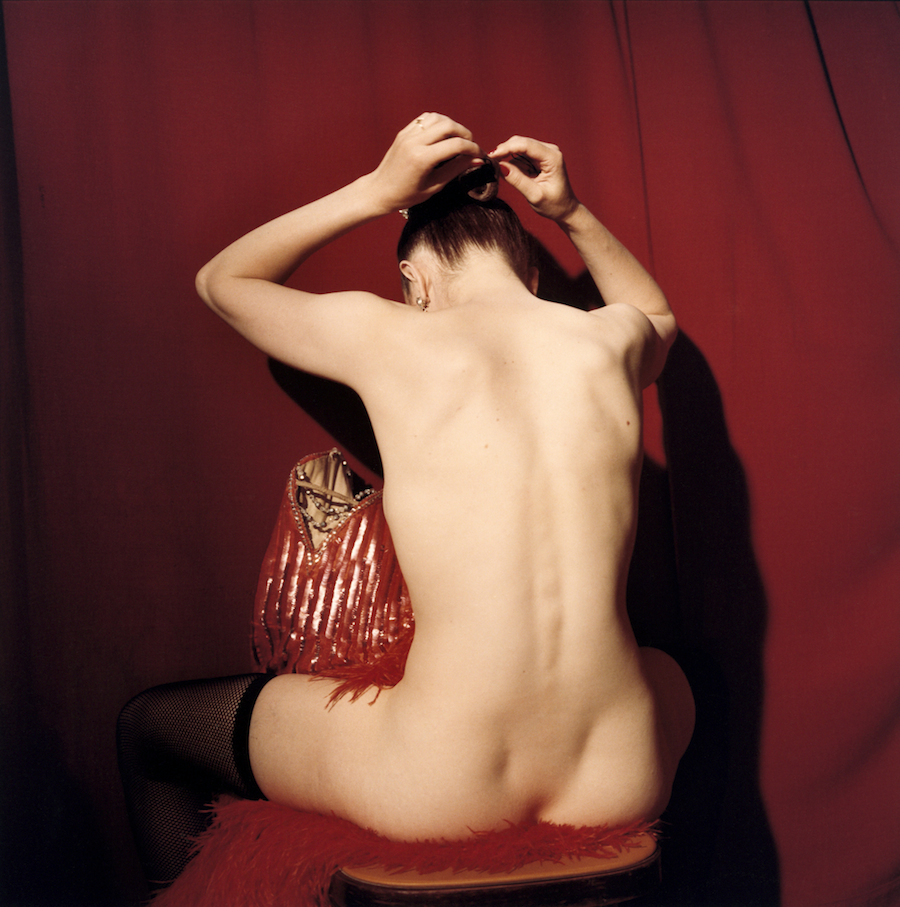
Screening as part of a six-film retrospective on Canadian director Maya Gallus at this year’s Hot Docs is the 20th anniversary of her essential 1997 documentary, “Erotica: A Journey Into Female Sexuality.” I’d actually recommend it as a double bill with “78/52,” since its exploration of patriarchal control and sexual violence connects directly to the shower scene. “I blamed my sexuality for these terrible things happening to me,” says Candida Royalle, reflecting on the shame she felt after enduring a near-rape in her youth, as well as unsavory treatment from a relative. As one of the film’s numerous voices of liberated womanhood, Royalle speaks powerfully about how male-dominated societies use sexuality as a weapon, preoccupying women with issues that don’t matter, such as their age, in order to keep them ashamed and submissive. Jeanne De Berge’s double life as a dominatrix empowers her with the knowledge that she is still desirable to men at age 60, and in one of the film’s more sensory-driven passages, she guides the viewer in a narrated session complete with tightened ropes and labored breathing on the soundtrack.
Sharing De Berge’s zesty spirit is photographer Bettina Rheims, whose nude portraits of nonprofessional female models make men uncomfortable because of their lack of vulnerability. The women in her pictures are all smiling, confident in their bodies and identities. These snapshots serve as a litmus test for any man’s preoccupation with power, and the degree to which he resents seeing it placed in the hands of a woman. Another photographer, Phyllis Christopher, deliberately places her female subjects in dark alleys, reclaiming spaces all too often inhabited by rapists. Comedian Fairy Bitch performs a great drag act where she inhabits the female clothes society has ordered her to wear, illustrating how they absurdly contradict her bigendered identity. After getting her start making “misogynistic porn,” adult filmmaker Annie Sprinkle helms a hit movie that allows her lead heroine to be aggressive, showing that “women can be domestic and sexual, mothers and lovers.” Her stage show includes an excerpt from an Australian radio show with a loathsome host who chastises the filmmaker before suggesting that Hitler “would’ve known what to do with her.”
Now that America currently has a president who has been accused of sexual assault and harassment multiple times, not to mention been caught on tape bragging of grabbing women by the genitals, Gallus’ film resonates more profoundly than ever as a fierce reclamation of female power. When asked why they insist on creating work that is unabashed in its sexual frankness, the subjects stress that they are fueled by the generations of women who were told to hide their sexuality. In the final interview before her death, author Anne Desclos recalls how her erotic 1954 novel, Story of O, horrified her repressed mother far more than it did her father. Eroticism is, after all, “a space of individual freedom,” as observed by author Alina Reyes, who found great success with her own debut novel, The Butcher. It’s a testament to the documentary’s timelessness that it frequently reminded me of some of the most exciting work currently being made by female filmmakers, such as Marielle Heller and Joanna Arnow.
Deborah Kampmeier’s “Split” channels Gallus’ rallying cry for women to take ownership of their sexuality, including an explicit sequence of masturbation not unlike the one that Sprinkle controversially performed onstage. De Berge’s observations about the connection between religion and sadomasochism speaks volumes about the popularity of Fifty Shades of Grey among women still held captive in a puritanical culture. “Catholicism is impregnated with the glow of martyrdom,” De Berge relies, drawing attention to how physical suffering is eroticized in religious art, a theme unforgettably portrayed by the orgasmic death of Piper Laurie’s fanatical mother in Brian De Palma’s “Carrie.” Rather than allow their sexual desires to take over the entirety of their lives, these women have found healthy ways to incorporate them into their work, their relationships and their uncensored consciousness. Rheims dubs this approach “the solution for not going crazy,” which is essentially the message of Julia Ducournau’s “Raw,” a film paralleling a young woman’s sexual awakening with her sudden appetite for human flesh. Gallus’ marvelous labor of love is not only a call for equality, it is a prescription for sanity, and there’s no denying our world is in dire need of it.

